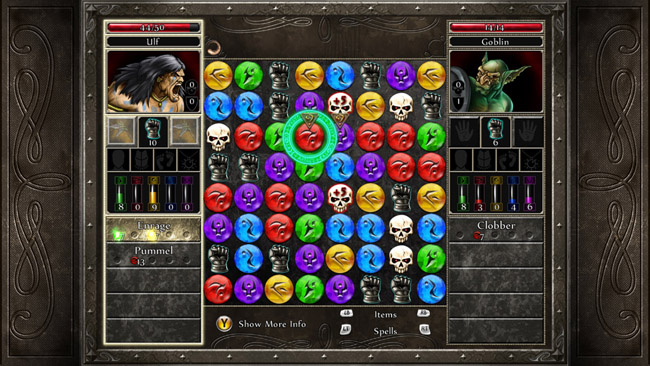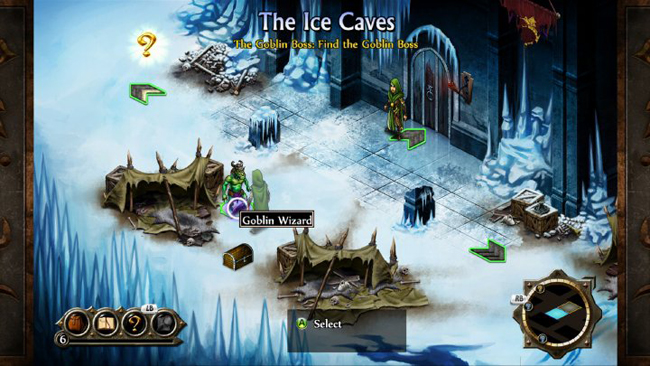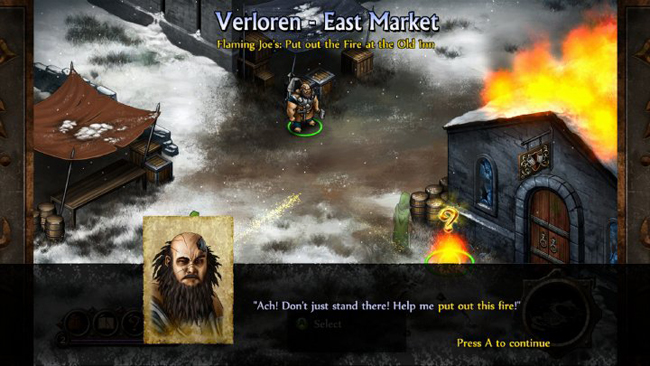
I was the kind of person who thoroughly enjoyed Puzzle Quest for my Nintendo DS, as repetitive a game as it was. I could sit for hours on the couch flipping gems, collecting experience, and seemingly taking on the same quest over and over again. It’s semi-sequel in space, Galactrix, carried much of the same flavor but sadly didn’t capture the magic of the original.
While at PAX, I had the opportunity to spend some time with the upcoming sequel, Puzzle Quest 2. After two years of playing puzzle games and tower defense clones on my iPhone and DS and the incredibly evolved experiences on XBLA, I didn’t quite know if I was ready for another puzzle RPG. I thought I was worn out.
Boy, was I wrong.

From the first look at the game, I noticed the change in graphical style. The imagery was very illustrative and painterly. Moving away from the Anime style of the original, the new game’s visuals fit better alongside Western PC games like Warcraft and Diablo. The developers, Infinite, planned the art style to be more accessible and interesting to a variety of gamers.
Gone were the static map points that my icon traveled between in the past. In its place was a more flushed out map system in which my character was visible and animated in isometric view as he walked between locations. The initial area we demoed was a town, complete with snow-covered roofs and a building on fire. This town, we were told, was designed to be a tutorial for the game and would only last about 15 minutes before the real action took place in the next dungeon.
To go along with the more Western influence, Infinite designed the game to be more of a dungeon crawler. Although it seemed a bit linear in structure — get a task, do the task, go on to the next task in order — the game would allow for returning to locations if grinding or treasure-hunting was desired, and sidequests were always available.
I was able to select from one of four character classes: Barbarian, Assassin, War Mage, and Inquisitor. These each had their own strengths and weaknesses, as per typical video game class structure, and each related to a different color gem on the puzzle board. I chose the Barbarian, and immediately began to fiddle with the character’s battle equipment. An improvement over the original, PQ2 included several slots to customize a character’s armor and weapons. Weapons were to be found frequently throughout the game, but the value was to level up the ones we had. The huge emphasis on character development was a welcome direction for the game, providing a better personal link to the character than the first game had.

The initial quests had me extinguishing house fires and battling beasts that wandered into the town, something that I’m sure a Barbarian would enjoy. The puzzle board remained mostly the same from the original game, but the emphasis on eye-catching glitz and glamor is there. Bright lights, particle effects, and audio gimmicks capitalized on the typical visual rewards associated with modern puzzle games like Bejeweled Blitz, a game that the publisher on hand informed us the game drew inspiration and one he noted that captured the attention of core and casual gamers alike.
While there wasn’t gold and experience displayed on the board this time (those came after battles), there were a few new gems to worry about, notably the “Gauntlet” gems. Accumulating these allowed for the use of actions associated with weapons. This new detail allowed for battles to be much more than just a line-up of colors. Now, I had to think about what my next action would be, and had to plan my weapons ahead of time accordingly.
Puzzle Quest 2 takes the the elements of the first game that were admired — the battles, the story, the characters — and mixes in a great amount of depth in customization and a more accessible and appealing visual style. I looks to be yet another version of the game we love, and with these tweaks might recapture the magic of the original. The game is due later this Spring for the XBox 360 and Nintendo DS.
Images courtesy D3P


2 Comments